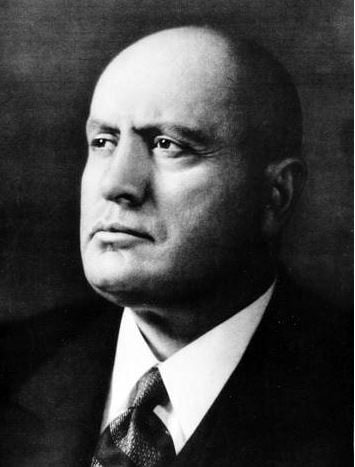What is fascism? Definition and meaning
Fascism is a way of organizing a society, a country, with very harsh control or authority. The nation is led by a dictator who controls the government and the lives of the citizens – nobody is allowed to disagree with a fascist leader.
Fascism is a type of extreme, right-wing ideology that celebrates the nation – and often the race – as an organic community that transcends all other loyalties. It emphasizes a myth of national rebirth, always following a period of destruction or severe decline. Many people describe the movement as a blend of both left-wing and right-wing ideologies.
To this end, fascism seeks to purge all ‘alien’ forces and groups that might stain or threaten the organic community. The movement calls for a ‘spiritual revolution’ against signs of moral decay such as materialism or individualism.
Rooted in certain strands of European philosophical thought, fascism often co-opted ideas of collective will and national mythos to justify its rule.

Racial superiority
Often, but not in every case, fascism goes hand-in-hand with the promotion of racial superiority doctrines, the persecution of certain ethnic groups, imperialist expansion and genocide.
Some fascists form international associations with like-minded people in other countries. Often their ideologies relate to racial purity.
While usually espousing open male supremacy, sometimes fascism may also promote female solidarity and greater opportunities for women of the privileged race or nation.
Fascism is always populist – there is a perceived enemy or oppressor – and elitist. The will of the people is embodied in a select group or supreme leader, from whom total authority proceeds downward.
 Benito Mussolini once said: “Fascism is a religion. The twentieth century will be known in history as the century of Fascism.” (Image: Wikipedia)
Benito Mussolini once said: “Fascism is a religion. The twentieth century will be known in history as the century of Fascism.” (Image: Wikipedia)
Fascists seek to forcibly subordinate all parts of society to their ideological vision of organic community – usually through a totalitarian dictatorship. Both as a regime and political movement, fascism uses mass organizations as a system of control and integration. Opposition groups are persecuted and violently dealt with.
Birth of fascism
The first fascist movement to come into power was Benito Mussolini’s Blackshirts in 1922 in Italy – which originated during World War I and later spread to other European nations.
While the Italian movement was definitely authoritarian and nationalist and accepted violence in the struggle for political power, whether all the components of how people today describe fascism existed has been subject to academic dispute.
Some historians say that Italy’s fascist movement was not as racist as the Nazi movement in Germany. However, Mussolini often talked about a ‘natural law’ for stronger people to subject and dominate ‘inferior’ people such as the those of Yugoslavia, who he described as ‘barbaric’.
Nazism, characterized as a form of fascism that incorporated antisemitism and scientific racism, developed in Germany and flourished during and after the country’s economic collapse following World War I.
Gordon Brown, who was Prime Minister of the UK from 2007 to 2010, once said: “It is thanks to men and women who were totally committed to fighting fascism, people like Alan Turing, that the horrors of the Holocaust and of total war are part of Europe’s history and not Europe’s present.”
Adolf Hitler (1889-1945), leader of the Nazi Party, was the totalitarian leader – Führer – of Nazi Germany from 1934 to 1945. He initiated World War II in Europe with the invasion of Poland in 1939 and was a key figure in the Holocaust.
Francisco Franco (1892-1975) was the dictator – Caudillo – of Spain from 1939 until his death in 1975. Historians say that his regime was doctrinally at least a semi-fascist state. He received help before coming into power from the Italian fascists and German Nazi movements.
Is fascism left or right wing?
Fascism during the first half of the 20th century was influenced by both extremes of the political spectrum – the left and the right, national and supranational, rational and anti-rational, conservative and anti-conservative.
Many historians view fascism as either a doctrine that blends the philosophies of the left as well as the right, a revolutionary centrist doctrine, or both those things.
 Jeffrey Sachs, an American economist and director of The Earth Institute at Columbia University, one of the world’s leading experts on economic development and the fight against poverty, once said: “The great leaders of the second world war alliance, Franklin Roosevelt and Winston Churchill, understood the twin sides of destruction and salvation. Their war aims were not only to defeat fascism, but to create a world of shared prosperity.” (Image: twitter.com/JeffDSachs)
Jeffrey Sachs, an American economist and director of The Earth Institute at Columbia University, one of the world’s leading experts on economic development and the fight against poverty, once said: “The great leaders of the second world war alliance, Franklin Roosevelt and Winston Churchill, understood the twin sides of destruction and salvation. Their war aims were not only to defeat fascism, but to create a world of shared prosperity.” (Image: twitter.com/JeffDSachs)
-
Started in WWI
The movement emerged during the First World War among Italian national syndicalists who drew upon right-wing and left-wing political views.
In the early 1920s, Italian fascism shifted slowly to the right. Most people see the fascist’s belief in a supposedly superior people who should dominate as right wing.
-
Mussolini
In 1919, Mussolini described his fascist movement as one that would strike “against the backwardness of the right and the destructiveness of the left.” His party members later described their ideology as right wing.
Fascist economies typically centralized control, emphasizing state intervention and corporatist policies to enforce unity between employers and the workforce.
In the Italian Doctrine of Fascism, there is the following phrase:
“We are free to believe that this is the century of authority [20th century], a century tending to the ‘right,’ a fascist century.”
How a totalitarian party describes itself does not necessarily mean that what it says is true. The USSR’s (Union of Soviet Socialist Republics’) Communist Party described itself as strongly socialist. However, socialism, as opposed to communism, believes in free elections and freedom of the individual (free speech) – something the USSR never tolerated.
Video – What is Fascism?
This interesting video, from our sister channel on YouTube – Marketing Business Network, explains what ‘Fascism’ is using simple and easy-to-understand language and examples.

